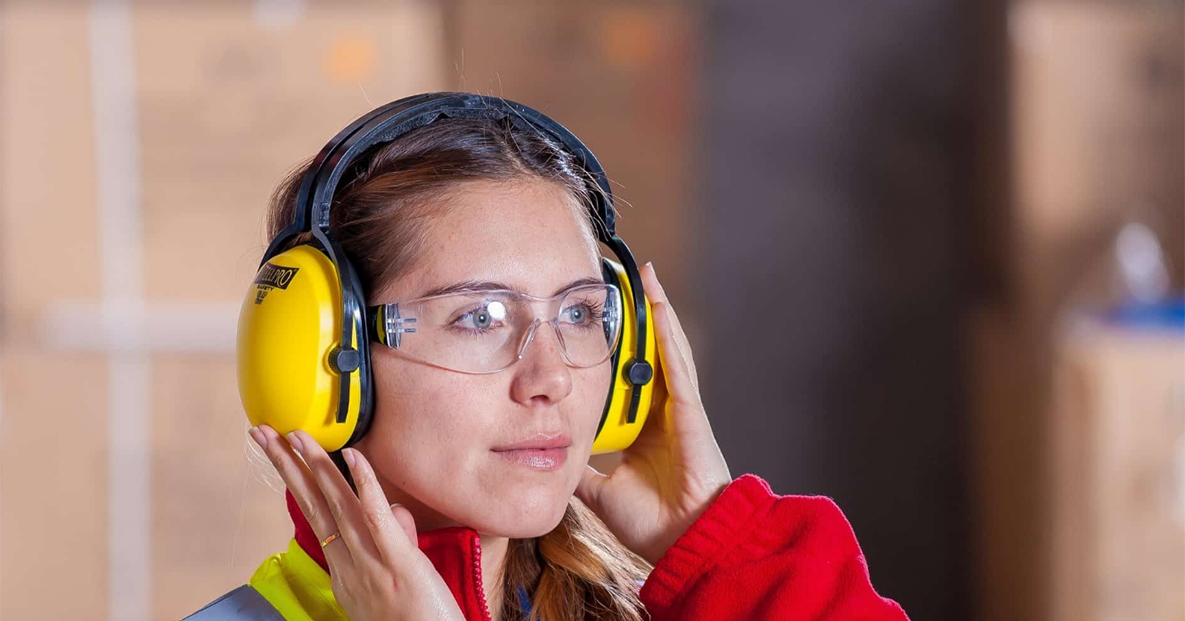
One in 10 individual has a hearing loss that affects his or her ability to understand normal speech. Age-related hearing loss is the most common cause of this condition and is more prevalent than hearing loss caused by excessive noise exposure. However, exposure to excessive noise can damage hearing, and it is important to understand the effects of this kind of noise, particularly because such exposure is avoidable.
Insight into maintaining auditory health
The ear has three main parts: the outer, middle, and inner ear. The outer ear (the part you can see) opens into the ear canal. The eardrum separates the ear canal from the middle ear. Small bones in the middle ear help transfer sound vibrations to the inner ear. Here, the vibrations become nerve impulses, which the brain interprets as music, a slamming door, a voice, and so on.
When noise is too loud, it begins to kill the nerve endings in the inner ear. Prolonged exposure to loud noise destroys nerve endings. As the number of nerve endings decreases, so does your hearing. There is no way to restore life to dead nerve endings; the damage is permanent. The longer you are exposed to a loud noise, the more damaging it may be. Also, the closer you are to the source of intense noise, the more damaging it is.
People differ in their sensitivity to noise. As a general rule, noise may damage your hearing if you are at arm’s length and have to shout to make yourself heard. If noise is hurting your ears, your ears may ring, or you may have difficulty hearing for several hours after exposure to the noise. Noise is characterized by intensity, measured in decibels; pitch, measured in hertz or kilohertz; and duration.
A ringing in the ears, called tinnitus, commonly occurs after noise exposure, and often becomes permanent. Some people react to loud noise with anxiety and irritability, an increase in pulse rate and blood pressure, or an increase in stomach acid. Very loud noise can reduce efficiency in performing difficult tasks by diverting attention from the job.
Earplugs are small inserts that fit into the outer ear canal. They must be sealed snugly so the entire circumference of the ear canal is blocked. An improperly fitted, dirty, or worn-out plug may not seal properly and can result in irritation of the ear canal. Plugs are available in a variety of shapes and sizes to fit individual ear canals and can be custom-made. For people who have trouble keeping them in their ears, the plugs can be fitted to a headband.
Earmuffs fit over the entire outer ear to form an air seal so the entire circumference of the ear canal is blocked, and they are held in place by an adjustable band. Earmuffs will not seal around eyeglasses or long hair, and the adjustable headband tension must be sufficient to hold earmuffs firmly in place. Earplugs and earmuffs can be found at most pharmacies.
Just as sunglasses help vision in very bright light, so hearing protectors enhance speech understanding in very noisy places. Even in a quiet setting, a normal-hearing person wearing hearing protectors should be able to understand a regular conversation.
Hearing protectors do slightly reduce the ability of those with damaged hearing or poor comprehension of language to understand normal conversation. However, it is essential that persons with impaired hearing wear earplugs or muffs to prevent further inner ear damage in very noisy places.
It has been argued that hearing protectors might reduce a worker’s ability to hear the noises that signify an improperly functioning machine. However, most workers readily adjust to the quieter sounds and can still detect such problems. If a worker is already hearing impaired, he or she needs expert advice about how to protect against further damage. In some cases hearing aids can and should be used under earmuffs.
Hearing loss usually develops over a period of several years. Because it is painless and gradual, you might not notice it. What you might notice is a ringing or other sound in your ear (tinnitus), which could be the result of long-term exposure to noise that has damaged hearing nerves. Or you may have trouble understanding what people say; they may seem to be mumbling, especially when you are in a noisy place such as a crowd or a party. This could be the beginning of high-frequency hearing loss; a hearing test will detect it.
If you have any of these symptoms, they may be caused by impacted wax or an ear infection, which are relatively easy to correct. However, you may suffer from noise-related hearing loss. In any case, take no chances with noise—the hearing loss it causes is permanent. If you suspect hearing loss, consult a physician with special training in ear care and hearing disorders (called an Otolaryngologist or Otologist). This doctor can diagnose your hearing problem and recommend the best way to manage it.
Decibels (dB) measure the intensity of sound. The scale runs from the faintest sound the human ear can detect, which is labeled 0 dB, to more than 180 dB, the noise at a rocket pad during launch. Most experts agree that continual exposure to more than 85 decibels is dangerous. Recent studies show an alarming increase in noise-related hearing loss in young people.
Pitch is the frequency of sound vibrations per second measured in hertz or kilohertz, and duration. A low pitch, such as a deep voice or a tuba, makes fewer vibrations per second than a high voice or violin—the higher the pitch, the higher the frequency. Loss of high-frequency hearing also can make speech sound muffled. (Source: This page is adapted from a brochure published by the American Academy of Otolaryngology – Head and Neck Surgery, Inc.)
Copyright @ 2023 | All Rights Reserved by : DAS ENT Care